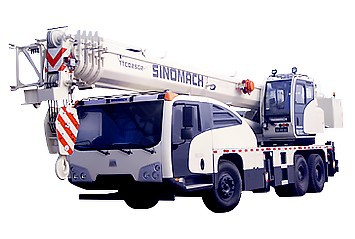Maximizing Performance with Jet RAM: A Comprehensive Guide

Introduction
In the fast-evolving world of computing, the importance of high-performance components cannot be emphasized enough. Among these components, RAM (Random Access Memory) plays a critical role in determining the speed and efficiency of your system. One innovative type of RAM that is gaining attention is jet RAM, leveraging advanced technology to significantly enhance computing performance. This article will explore all aspects of jet RAM, including its advantages, applications, comparisons with traditional RAM, and much more. Whether you’re a tech enthusiast or just looking to upgrade your system, this guide aims to provide you with the knowledge you need.
What is Jet RAM?
Jet RAM is a cutting-edge type of memory storage designed to facilitate lightning-fast data access and processing. Unlike traditional RAM, which relies on older technologies, jet RAM utilizes advanced materials and architecture to improve performance and efficiency. The development of jet RAM has emerged as a solution to the increasing demands for high-speed data processing in various fields, from gaming to data analytics.
The Technology Behind Jet RAM
Jet RAM incorporates innovative designs such as 3D stacking and improved thermal management. These features allow for faster data transmission and lower latency times, translating into better overall performance for systems equipped with jet RAM modules.
3D Stacking Technology
One of the standout features of jet RAM is its use of 3D stacking. This design allows different layers of memory chips to be stacked vertically, reducing the distance data must travel, and thus speeding up access times. This method is particularly useful in applications requiring large amounts of data to be processed quickly.
Improved Thermal Management
Another crucial aspect of jet RAM is its improved thermal management. With enhanced cooling solutions, jet RAM modules can operate efficiently without overheating, which is often a limitation in traditional RAM. This leads to a decrease in system failures due to heat and promotes a longer lifespan of the hardware.
Benefits of Jet RAM
Jet RAM offers a multitude of benefits over traditional RAM options. Here are some key advantages:
1. Enhanced Speed and Performance
With data access speeds significantly greater than previous generations of RAM, jet RAM can dramatically improve system responsiveness, especially in resource-intensive applications.
2. Reduced Latency
Lower latency ensures that data is available for processing as quickly as possible, which is ideal for tasks in gaming, video editing, and real-time applications.
3. Greater Energy Efficiency
Jet RAM is designed with energy efficiency in mind, using less power while delivering higher performance. This is advantageous for both laptop users seeking battery longevity and data center operators aiming to reduce operational costs.
4. Compatible with Future Technologies
As technology progresses, jet RAM is designed to be compatible with upcoming hardware and software advancements, ensuring that it remains a valuable investment for years to come.
Comparing Jet RAM with Traditional RAM Types
Understanding how jet RAM stacks up against traditional RAM technologies is vital for potential buyers. Below is a comparison table:
| Feature | Jet RAM | Traditional RAM |
|---|---|---|
| Speed | High-speed access | Moderate speed |
| Latency | Low latency | Higher latency |
| Energy Efficiency | Excellent | Good |
| Future Compatibility | High | Varies |
Applications of Jet RAM
Jet RAM’s advanced capabilities make it ideal for a wide range of applications:

1. Gaming
In the gaming industry, where processing speed can make or break user experience, jet RAM offers gamers smoother gameplay and faster load times.
2. Data Centers
Businesses that rely on data centers benefit from the efficiency and reliability of jet RAM, allowing them to handle large datasets quickly.
3. Video Editing and Rendering
For video editors and graphic designers, jet RAM allows for high-resolution video rendering and multitasking with large files without lag.
4. Artificial Intelligence
In AI applications requiring fast processing of large datasets, jet RAM provides the necessary speed and efficiency to train models effectively.
How to Choose the Right Jet RAM for Your System

Selecting the perfect jet RAM for your needs involves understanding your specific use case and compatibility requirements. Here are some tips:
1. Determine Your System’s RAM Compatibility
Before purchasing jet RAM, ensure that it is compatible with your motherboard and CPU. Check the manufacturer’s specifications for memory type and speed.
2. Analyze Your Usage Needs
Consider how you will use your computer. Casual browsing may not require as much RAM as gaming or professional video editing. Tailor your RAM choice based on these needs.
3. Look at Brand Reputation
Research brands known for quality RAM. Established companies often provide better warranties and support, ensuring peace of mind.
4. Future-Proofing Considerations
Opt for higher capacity options when possible, as this can future-proof your system for upcoming software demands and advancements in technology.
Potential Challenges of Jet RAM
While there are numerous advantages, it is essential to consider some challenges associated with jet RAM:
1. Cost
Jet RAM is often more expensive than traditional RAM due to its advanced technology and higher performance capabilities. Budget-conscious buyers may find it challenging to justify the cost.
2. Availability
Due to its relatively recent introduction to the market, jet RAM may not be as widely available as traditional RAM options, which could limit choices for users.
3. Compatibility Issues
Older systems may not support jet RAM, necessitating system upgrades or replacements for those wanting to utilize its benefits.
Practical Tips for Installing Jet RAM
Installing jet RAM can be a straightforward process. Below are some practical tips to ensure a successful installation:
1. Prepare Your Workspace
Work in a static-free environment. Use an anti-static wrist strap and ensure that your workspace is clean to avoid any components getting damaged.
2. Follow Manufacturer Instructions
Refer to the installation manual provided by the jet RAM manufacturer for specific installation guidelines to ensure proper fitting.

3. Check for Correct Orientation
Ensure the RAM is inserted in the correct orientation in the DIMM slots on your motherboard to avoid damage.
4. Test the Installation
After installation, boot your system and check to ensure the RAM is being recognized by the BIOS. If there are issues, recheck your connections and seating of the RAM modules.
Frequently Asked Questions (FAQs)
1. What are the advantages of jet RAM over regular RAM?
Jet RAM offers enhanced speed, reduced latency, better energy efficiency, and future compatibility, making it a superior choice for high-performance applications.
2. Can I use jet RAM in my older system?
Compatibility varies by system; some older motherboards may not support jet RAM. Always check your motherboard specifications before purchasing.
3. Is jet RAM worth the investment?
For users who require high performance—such as gamers or professionals working with large files—jet RAM can significantly enhance system capabilities, making it a justified investment.
4. Will jet RAM improve gaming performance?
Yes, jet RAM can provide smoother gameplay experiences and faster load times, which are crucial for an enhanced gaming experience.
5. How do I choose the right capacity of jet RAM?
Consider your usage needs: casual users might only need 8GB, while gamers or content creators may benefit from 16GB or more.
6. What is the typical lifespan of jet RAM?
Jet RAM typically has a lifespan comparable to traditional RAM, often lasting several years under normal operating conditions. Enhanced thermal management can contribute to longer usage periods.
